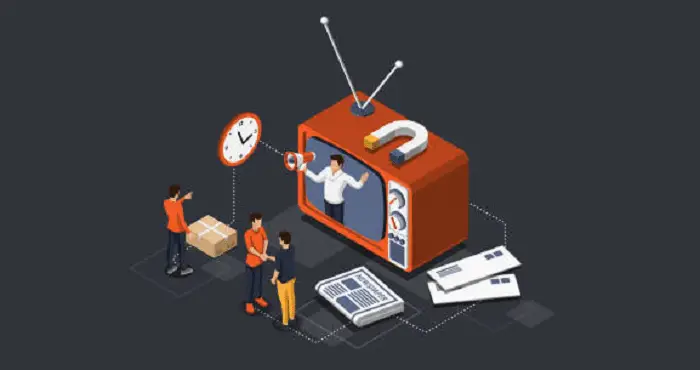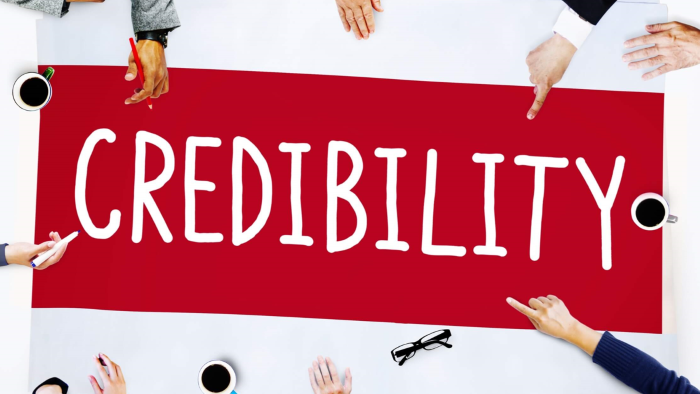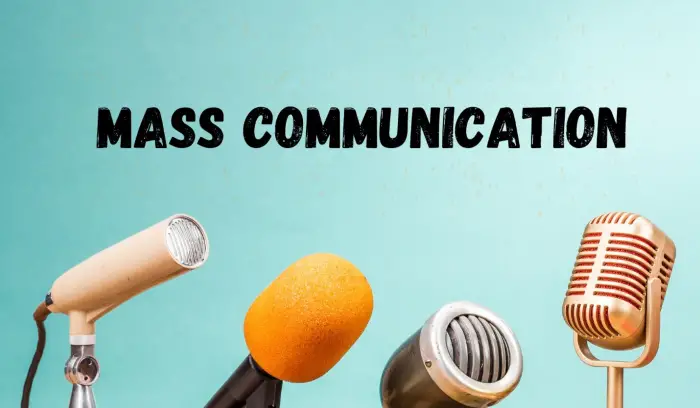Find out how TV, radio, banners, print, magazines, and newspapers can help market your products and services effectively.
Learn from the past with these 6 traditional media examples that still work today –
- TV
- Radio
- Banners
- Magazines
- Newspapers
With so many options available, it’s worth exploring traditional media to complement your digital marketing efforts and reach a broader audience.
See Also: Top 8 Digital Marketing Trends in 2024 to look out for
Impact of traditional media
The dominance of traditional media has diminished. Besides, it continues to have a significant impact on your life.
Traditional media can influence how you see the world and fit within it. We may receive knowledge and enjoyment through it that we do not otherwise receive.
Benefits of connecting with traditional media
Traditional media outlets have several advantages; points below can depict some of them:
Trustworthy
Traditional media has strict editorial standards and fact-checking procedures. Due to this, it’s more trustworthy than its online equivalents, and it presents the general public with accurate and impartial information.
Connection to the community
Reaching local audiences and developing personal relationships with customers are the primary goals of traditional marketing. Consumers today depend more than ever on relationships, and businesses that appeal to their sense of genuine concern for their welfare and quality of life will win them over.
Credibility
Larger-format printed materials and advertisements are frequently thought to be more reliable. The link of traditional marketing with well-established media and larger budgets is one of the causes.
A business must have the financial resources to do so to run a magazine ad or air a radio or television commercial. So, the company is seen as expanding, prosperous, and steady.
Sustainable promotional materials
Traditional marketing techniques are more long-lasting and make a bigger impact on your audience. The same TV ad, flyers, business cards, or booklets can be distributed more widely. As a result, creating fresh content to market your good or service is not as necessary.
Connection with a wider audience
Reaching out to a more varied audience can aid in the growth of a small business. Traditional marketing can be a superior strategy to draw in more potential clients.
Traditional media examples
The 6 traditional media examples are:
TV
TV advertising provides a significant competitive edge. It can increase consumers’ trust and market share and deliver size and reach. It also allows you to purchase the precise quantity of ratings you require.
TV is not just the most commonly seen medium for video commercials; it is also becoming more diversified and inviting to small and mid-sized enterprises and more prominent conventional television marketers.

Now, more than ever, your company may benefit from a television appearance and use this medium for marketing your products and services through this most effective channel.
Radio
Each target demographic will have personalized and localized messages via radio. Advertisers can target specific demographics, psychographics, geographic locations, and events and genres within a market. Radio commercials are personalized to particular times of day to help you reach your target demographic at the precisely right moment.
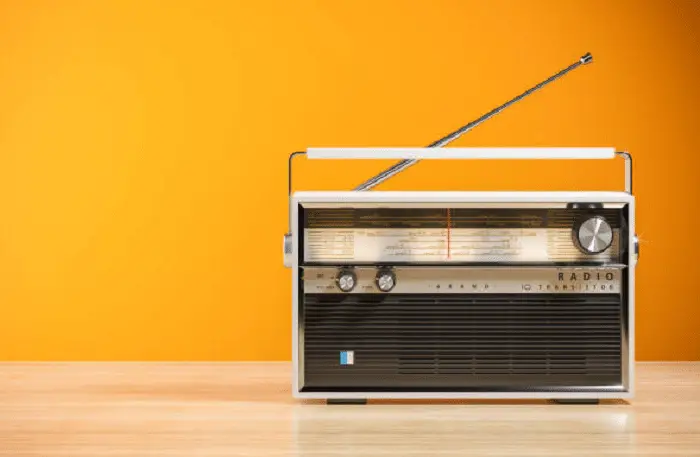
Furthermore, if adjustments are required, radio production is less expensive and faster than the regular lead periods required by TV and print. When you consider radio’s reach and frequency, it’s easy to see why it’s a popular choice.
Banners
Advertising through Banners is an excellent way to surround your promotions with our quality editorial content. They are pretty successful in capturing customers’ attention, and banners are challenging to ignore, and the odds are that the client will recognize and recall what they see.
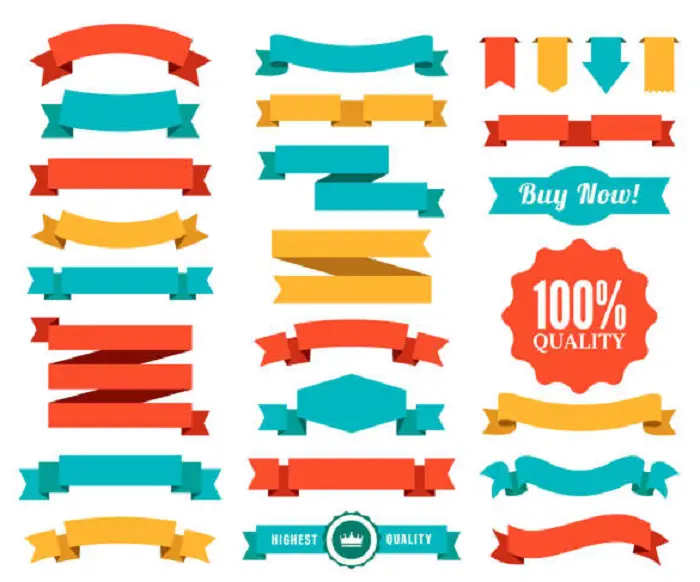
A graphic-designed banner may attract new clients and keep existing ones. Banners are also successful since the text is brief and easy to digest.
Circulation is vital when it comes to print media advertising. The more widely distributed a printed newspaper is, the more readers the advertising contained inside it receive. The disadvantage of print advertising is that the ad may not be relevant to many readers even when put in well-read magazines.

A corporation should place the ad in a thematically relevant publication to combat the occasionally underwhelming readership reaction to a print advertisement. For example, an advertisement for a new novel might be better placed in a short fiction magazine with a similar genre than in the local newspaper. In the ad, including a coupon or unique discount code for retail items or services might assist a firm in measuring its efficacy in driving new sales.
See Also: How To Write a Press Release in 2024
Magazines
Even in hard copy, the magazine sector is doing well. New publications arrive regularly, and many of them survive and thrive. Purchasing ad space is not cheap, but it may be pretty successful. A commercial spot airs on television, and then it’s finished. The radio is the same, and the daily newspaper is discarded. The coffee table may have magazines for seasons, or in a doctor’s waiting room for even longer.

When the buyer has finished reading the magazine, family and friends may read it, give it to a neighbor, or contribute it to their library to read. The opportunity to sell might last long after you have paid for the advertisement.
Newspaper
Newspaper advertising can reach specific populations that are generally harder to get through other channels. This enables advertisers to target smaller, specialist audiences more efficiently, particularly in specific geographical locations. Print-to-web elements, such as QR codes, may also be used in newspaper advertising to connect readers to relevant web-based content, such as special offers.

Newspaper advertising is less expensive per thousand readers than television, radio, and direct mail advertising. Furthermore, the short lead periods of newspapers enable fast revisions to any ad while still reaching essential deadlines. Moreover, newspaper employees will work directly with clients to design advertising at no extra cost.
Challenges in the present time
The modern period presents several difficulties for traditional media outlets. The diminished reading and viewership are the most pervasive, and people thus turn to the internet for news and entertainment.
Effectiveness of traditional media in today’s world
Today, people have so many digital resources at their fingertips. However, traditional media sources are still helpful. One reason is that they have been around longer. It also has developed a reputation for objectivity and integrity. Additionally, it offers more thorough story coverage than you may get online.
Difference between traditional and new media
Traditional media entails one-way communication, while new media is interactive. The readers or viewers of traditional media cannot react to what they are reading, hearing, or seeing. Users of new media can post, remark, and interact with one another in discussions.
Importance of traditional media in mass communication
Thus, traditional media is a kind of communication that draws on oral, written, musical, and visual folk art traditions and is passed down from one generation to the next in a culture or collection of societies.
They are native forms of communication that have long served the culture as tools and media of exchange.
Pros and cons of traditional media
The pros and cons of traditional media are as follows.
Pros
- People can interact with real-world communication using traditional media. They can communicate face-to-face and see one another’s every move, facilitating a better grasp of the suggested solution.
- Traditional media sources provide flexibility in production. According to their needs, people can create communication ideas.
- Traditional media has a high coverage rate. Since many people in nations like India still have not yet been used to the internet. Access to these sites is also available to traditional journalists.
- It covers immediate message distribution to many recipients at once.
Cons
- Traditional media is a one-way communication process.
- You might feel compelled to use traditional media at times. Hence, you don’t want to see advertisements for products. They continue to move in front of your eyes, compelling you to learn more about them.
- Traditional media does not receive immediate reaction and can’t spread word of mouth to many people.
- Traditional media also struggles with a lack of community. Its audiences and viewers do not share a connection with a particular company or product.
- Advertisers invest a lot of money to reach their target audiences. Though all but their efforts are unsuccessful.
See Also: What is Direct Response Marketing? Best Direct Response Marketing Techniques
FAQs
Why is traditional media important?
There is no replacement for a factual, balanced account when it comes to the news. Additionally, although more individuals are indeed finding current events via Facebook and other social media, these platforms only present information in the form of headlines and soundbites.
What are the characteristics of traditional media?
produced by a formal, complicated structure. There are several gatekeepers. It requires a lot of money to run. It is there to create profiles. These are very cutthroat.
Do you think traditional media is still important at present?
Yes, they do. When learning about new businesses, traditional radio and television advertising media channels continue to rule. We can all agree that customers are spending more and more time on digital platforms.
Conclusion
In conclusion, these are some of the best traditional media examples. Make sure you understand how to measure the success of your campaign. Each medium has advantages and disadvantages. After you’ve set your objectives, you’ll be able to choose which is best for you. Whether to acquire conventional media in-house or through an agency is a decision to make. Purchasing media can be a time-consuming and challenging procedure.
You might wish to use an agency if you have a lot of media to buy. You’ll pay for their services, but they may also have more purchasing power, allowing them to negotiate better deals and find more cost-effective ways to reach your target market.
When evaluating costs, keep targeting in mind. Media sales staff may give you a flat rate for a specific ad or a cost per thousand (CPM) impressions estimate. A more tailored media may have a higher CPM than a generic one, but calculating your cost per targeted impression allows you to compare apples to apples instead.
Make an engaging advertisement with a clear call to action. Your ad should capture your target market’s attention – be innovative, but keep your message basic and straightforward. Make a call to action: To discover more about a particular offer or program, encourage prospects to contact or visit a customized landing page.


